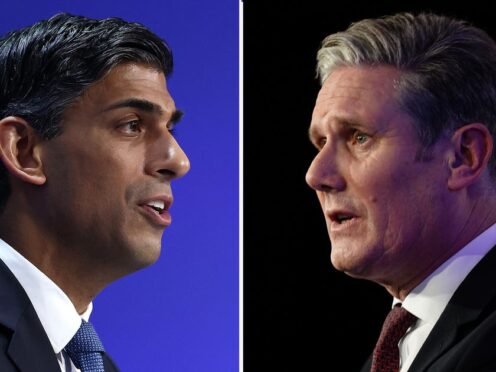Several public services are at risk of suffering “sharp cuts” under either a future Labour or Conservative government, according to the Institute for Fiscal Studies (IFS).
The IFS said the manifestos of the major parties provided little information about the funding outlook for individual services, which makes it easier for them to stay silent on the cuts to unprotected budgets.
The IFS said it did not expect the parties to conduct comprehensive spending reviews for a potential five-year Parliament in their manifestos.
But it added parties could have provided more details on their priorities and rough minimums or totals for different areas of spending in a bid to “give a sense of what we can realistically expect from them” in the next Parliament.
Existing government departmental spending plans run until the end of March 2025.

The IFS noted the two main parties have provided costings for specific policies, such as Labour’s commitment to free breakfast clubs and the Conservatives’ bid to modernise GP services.
But it said the broad priorities of each party “do not tell us anything about overall spending on each public service”.
In a new briefing note, the IFS said: “At the time of the March 2024 Budget, the baseline day-to-day resource spending envelope for all government departments was growing at 1% in real terms per year
after this year.
“Neither main party has changed overall resource spending plans in significant ways with their manifestos: Labour’s £5 billion top-up in 2028–29 means real-terms resource spending will now grow at 1.2%, rather than 1%, on average per year.
“The Conservatives left total spending plans virtually unchanged, topping up total departmental spending in 2029–30 by around £500 million.
“We have already discussed the fact that the lack of department-by-department plans after this year means that we are uncertain about the path of spending on particular public services, and
that we are unable to evaluate the ‘cost’ of committing to a given path of spending.
“But the lack of department-by-department plans also means that parties can commit in their manifestos to overall spending plans that imply sharp real-terms cuts to a range of areas, without spelling out where those cuts will fall or how they are to be achieved.”
IFS research economist Bee Boileau, an author of the report, said: “Both the Conservative Party and the Labour Party have made a lot of their fully funded pledges in the manifestos this election campaign.
“But, in practice, these pledges mean almost nothing for the funding that individual public services might expect in the next Parliament.
“We do not know how total spending will be allocated between public services after next March, and, with a few exceptions, neither manifesto offered much light.
“The manifestos did tell us that neither party is planning to top up total public service spending by enough to avoid very difficult choices for many public services in the next parliament.
“But the manifestos provided no information on which areas would actually bear the brunt of these choices, continuing the main parties’ conspiracy of silence when it comes to public service spending plans.”
Mark Franks, director of welfare at the Nuffield Foundation, said: “The public should be informed about whether the parties aiming to form the next government have credible plans for funding the essential public services that people rely on.
“In this election, voters are being asked to make their decision without adequate and clear information on this critical issue.
“This lack of clarity should be addressed, both in the remaining two weeks before the election and in future electoral processes.”
